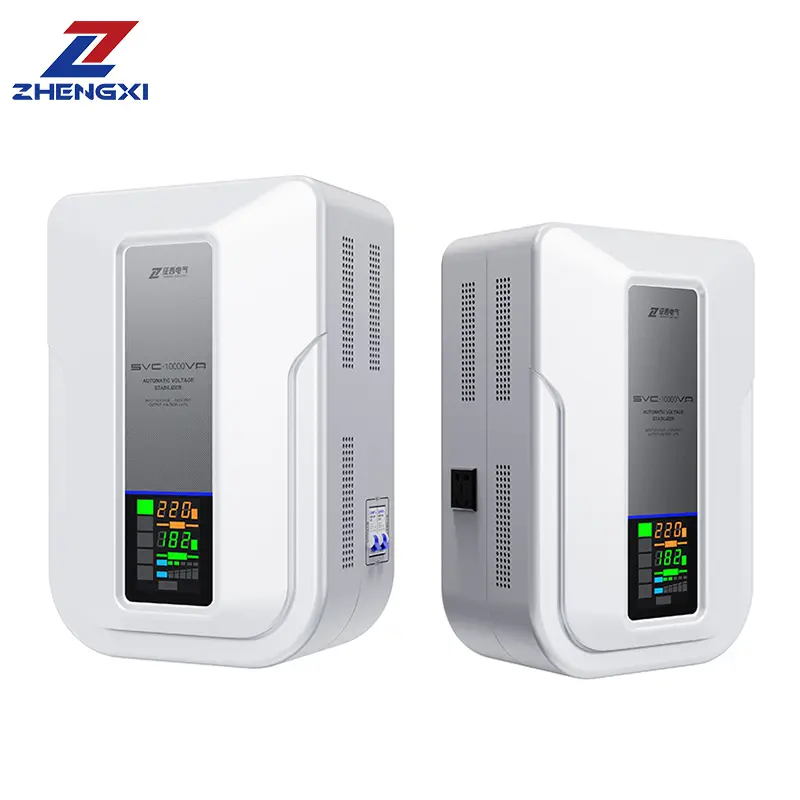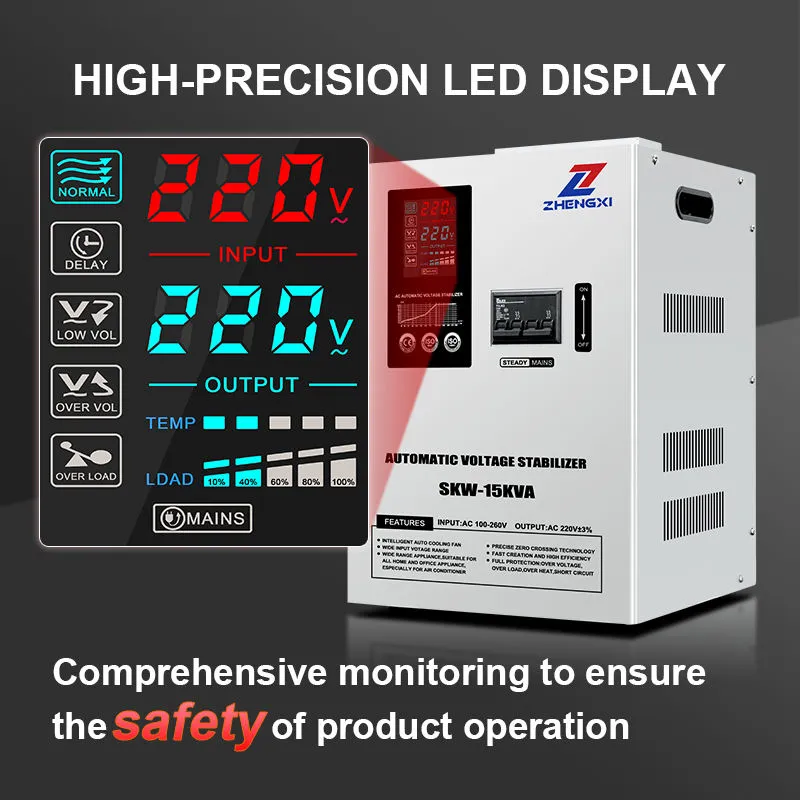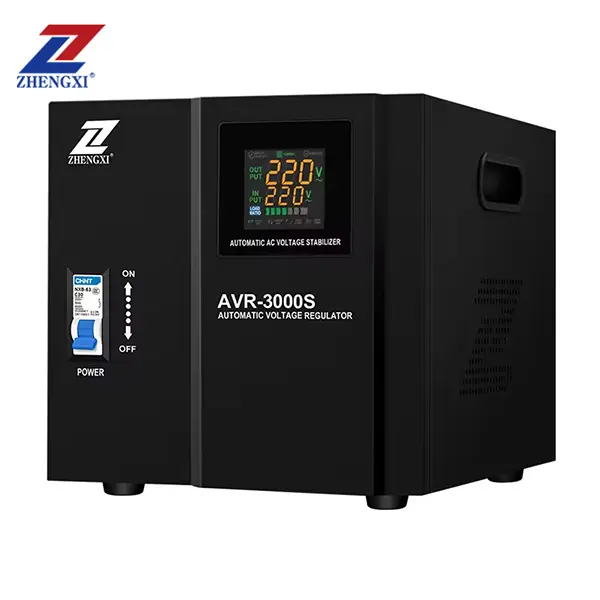Ensuring your air conditioner (AC) runs smoothly and enjoys a long lifespan goes beyond routine maintenance and cleaning filters. A critical—but often overlooked—question is: Does an AC require a voltage stabilizer? In this article, we’ll explore when and why you might need a voltage stabilizer for your AC, how it works, and how to choose the best voltage stabilizer for AC applications.
1. Why Voltage Stability Matters for ACs
Air conditioners rely on compressors and electronic control boards that demand a consistent supply—typically 220 V ± 10%. When input voltage dips or spikes outside this window, your AC may:
- Trip Breakers: Causing sudden shutdowns.
- Overheat Components: Leading to premature compressor failure.
- Display Error Codes: Interrupting cooling performance.
A voltage stabilizer ensures that the AC always sees safe, regulated power.
2. How Voltage Fluctuations Affect Air Conditioners
- Undervoltage (Brown‑outs): Motors draw excessive current to maintain RPM, overloading windings.
- Overvoltage (Spikes): Stress on electronic inverters and PCB components can cause irreparable damage.
- Transient Surges: Lightning strikes or large inductive loads switching on/off create brief but destructive spikes.
Over time, these fluctuations reduce efficiency, increase energy bills, and shorten service life.
3. Built‑In vs. External Voltage Protection
Many modern inverter ACs include basic surge protection and soft‑start functions. However, these built‑in safeguards typically:
- Cover only minor voltage variations (±5–10 V).
- Lack robust surge arrestors for high‑energy transients.
- Do not boost prolonged undervoltage conditions.
An external voltage stabilizer for AC fills these gaps by maintaining output within a tight band (e.g., 220 V ± 3 V) regardless of wide input swings.
4. When Does Your AC Need a Voltage Stabilizer?
Consider adding a stabilizer if you experience any of the following:
- Frequent Power Trips: Breakers or AC protection switches activate regularly.
- Grid Instability: Your region reports voltage below 180 V or above 260 V.
- Multiple AC Units: Combined startup currents cause significant line drops.
- Warranty Requirements: Some manufacturers mandate external stabilization for valid coverage.
5. Benefits of Using a Voltage Stabilizer for AC
- Extended Equipment Life: Protects compressor, inverter board, and PCB from stress.
- Consistent Cooling Performance: Maintains stable temperatures without unexpected shutdowns.
- Energy Savings: Prevents over‑current draw during undervoltage, reducing electricity consumption.
- Warranty Assurance: Meets manufacturer guidelines for voltage protection.
- Reduced Maintenance Costs: Fewer breakdowns and parts replacements over time.
6. Choosing the Right Voltage Stabilizer
When evaluating voltage stabilizer for AC price and specs, look for:
| Feature | Recommendation |
|---|---|
| Capacity (kVA) | ≥20% above AC’s locked‑rotor current |
| Response Time | Static type (<10 ms) for inverter ACs |
| Input Voltage Range | Wide‑range (140–300 V) for unstable grids |
| Protection Suite | Surge arrestor, overload, short‑circuit |
| Display & Alerts | Digital meters & audible alarms |
| Certifications | CE, RoHS, ISO9001 |
Choosing a reputable voltage stabilizer manufacturer ensures reliable performance, bulk pricing, and OEM support.
7. Installation & Maintenance Tips
- Location: Install near the outdoor unit in a shaded, ventilated area.
- Wiring: Use appropriately gauged cables; minimize distance to reduce line drop.
- Earthing: Ensure solid grounding to protect against surges.
- Periodic Checks: Every 6–12 months, inspect for dust, tighten terminals, and verify calibration under simulated voltage variations.
FAQ
Q1. Can I run my AC without a stabilizer if I have a UPS?
A UPS provides backup power during outages but may not regulate voltage within the ideal band; a stabilizer is still recommended for proper voltage conditioning.
Q2. Will a voltage stabilizer increase my electricity bill?
Modern stabilizers have low standby losses (1–3%) and can actually save energy by preventing over‑current draw during undervoltage.
Q3. Is a servo or static stabilizer better for ACs?
Static stabilizers (solid‑state) respond faster (<10 ms) and have no moving parts, making them ideal for protecting inverter AC electronics.
Q4. How do I size a stabilizer for multiple ACs?
Calculate the combined VA of all units (including startup surges) and add a 20–30% safety margin when selecting kVA capacity.
Q5. Does adding a stabilizer void my AC warranty?
No—most manufacturers recommend or require external voltage stabilization to maintain warranty validity.
Installing a dedicated voltage stabilizer for AC ensures your unit operates reliably, efficiently, and within warranty guidelines. For competitive pricing, custom options, and global support, partner with SUNWAY—your trusted voltage stabilizer manufacturer.








